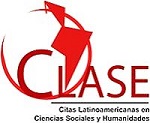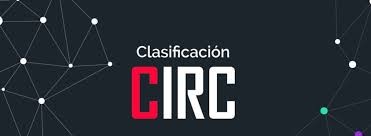Tecnoestrés. Evolución del concepto y sus principales consecuencias.
DOI:
https://doi.org/10.33571/teuken.v11n17a9Palabras clave:
tecnoestrés, consecuencias, biblioshinyResumen
El uso de las Tecnologías de la Información y Comunicación puede generar estrés tecnológico. El tecnoestrés comenzó a estudiarse en 1982 y dada la naturaleza dinámica de las tecnologías, cobra importancia evaluar la evolución del concepto y sus consecuencias. El objetivo de este artículo es explorar la estructura intelectual y social de la producción científica sobre el tecnoestrés y analizar la evolución del concepto, detectando las características que influyen en los niveles de tecnoestrés en los individuos. Los resultados indican que las investigaciones más relevantes provienen del área de sistemas de información. El concepto ha evolucionado con el tiempo y sus consecuencias también pueden experimentarlo personas que no trabajan. Concluimos que los programas de prevención deben considerar diferencias individuales, organizacionales y tecnológicas.Métricas de artículo
Resumen: 4728 PDF: 2803Métricas PlumX
Citas
Al-Qallaf, C. L. (2006). Librarians and technology in academic and research libraries in Kuwait: Perceptions and effects. LIBRI, 56 (3), 168-179. https//doi.org/10.1515/LIBR.2006.168
Alam, M. A. (2016). Techno-stress and productivity: Survey evidence from the aviation industry. Journal of Air Transport Management, 50, 62-70. https//doi.org/10.1016/j.jairtraman.2015.10.003
Aria, M. & Cuccurullo, C. (2017). Bibliometrix: An R-tool for comprehensive science mapping analysis. Journal of Informetrics, 11 (4), 959-975. https//doi.org/10.1016/j.joi.2017.08.007
Arnetz, B. & Berg, M. (1993). Techno-stress: psychophysiological consequences of poor man-machine interface (891-896). En: Smith, M.J. & Salvendy, G. Human-Computer Interaction, Vol 1: Applications and case studies. Amsterdam: Elsevier Science.
Arnetz, B. B. & Wiholm, C. (1997). Technological stress: Psychophysiological symptoms in modern offices. Journal of Psychosomatic Research, 43 (1), 35-42. https://doi.org/10.1016/S0022-3999(97)00083-4
Ayyagari, R.; Grover, V. & Purvis, R. (2011). Technostress: Technological Antecedents and Implications. MIS Quarterly, 35 (4), 831-858. https://doi.org/10.2307/41409963
Brillart, P. E. (2004). Technostress in the Workplace: Managing Stress in the Electronic Workplace. Journal of American Academy of Business, 5, 302-307.
Brod, C. (1984). Technostress: The human cost of the computer revolution. Reading MA: Addison -Wesley. 242 pp.
Brooks, S. (2015). Does personal social media usage affect efficiency and well-being? Computers in Human Behavior, 46, 26-37. https://doi.org/10.1016/j.chb.2014.12.053
Brynjolfsson, E. & Hitt, L. M. (2000). Beyond Computation: Information Technology, Organizational Transformation and Business Performance. Journal of Economic Perspectives, 14 (4), 23-48. https://doi.org/10.1257/jep.14.4.23
Champion, S. (1987). Managing technostress. TechTrends, 32 (5), 31-32. https://doi.org/10.1007/BF02771138
Chandra, S.; Shirish, A. & Srivastava, S. (2019). Technostress inhibit employee innovation? Examining the linear and curvilinear influence of technostress creators. Communications of the Association for Information Systems, 44 (1), 299-331. https://doi.org/10.17705/1CAIS.04419
Dias-Pocinho, M. & Costa-Garcia, J. (2009). Psychosocial impact of information and communication technologies (ICT): Technostress, physical damage and professional satisfaction. Acta Colombiana de Psicología, 11 (2), 127-139.
Fisher, W. & Wesolkowski, S. (1999). Tempering technostress. IEEE Technology and Society Magazine, 18 (1), 28-42. https://doi.org/10.1109/44.752243.
Fuglseth, A.M. & Sorebo, O. (2014). The effects of technostress within the context of employee use of ICT. Computers in Human Behavior, 40, 161-170. https://doi.org/10.1016/j.chb.2014.07.040
Gallardo, A. & De León, S. (2010). Ambientes colaborativos vs entrés laboral en la era de la información. Gestión y Estrategia, 37 (1), 49–60.
Jena, R.K. (2015). Impact of Technostress on Job Satisfaction: An Empirical Study among Indian Academician. The International Technology Management Review, 5 (3), 117-124.
Jena, R.K. (2015). Technostress in ICT enabled collaborative learning environment: An empirical study among Indian academician. Computers in Human Behavior, 51 (B), 1116-1123. https://doi.org/10.1016/j.chb.2015.03.020
Karr-Wisniewski, P. & LU, Y. (2010). When More is Too Much: Operationalizing Technology Overload and Exploring Its Impact on Knowledge Worker Productivity. Computers in Human Behavior, 26 (5), 1061-1072. https://doi.org/10.1016/j.chb.2010.03.008
Kasuga, N.; Itoh, K.; Oisni, S. & Nagashima, T. (2004). Study on relationship between technostress and antisocial behavior on computers. IEICE Transactions on Information and Systems, E87D (6), 1461-1465.
La Torre, G.; Esposito, A.; Sciarra, I. & Chiappetta, M. (2019). Definition, symptoms and risk of techno-stress: a systematic review. International Archives of Occupational and Environmental Health, 92 (1), 13-35. https://doi.org/10.1007/s00420-018-1352-1
Lee, A. R.; Son, S. M. & Kim, K. K. (2016). Information and communication technology overload and social networking service fatigue: A stress perspective. Computers in Human Behavior, 55, 51-61. https://doi.org/10.1016/j.chb.2015.08.011
Lee, Y. K.; Chan, C. T.; Lin, Y. & Cheng, Z. H. (2014). The Dark side of smartphone usage: Psychological traits, compulsive behavior and technostress. Computers in Human Behavior, 31, 373-383. https://doi.org/10.1016/j.chb.2013.10.047
Lei, C. & Ngai, E. (2014). The Double-Edged Nature of Technostress on Work Performance: A Research Model and Research Agenda. In: M. D. Myers & D. W. Straub (eds.). ICIS: Association for Information Systems.
Leung, L. & Zhang, R. (2017). Mapping ICT use at home and telecommuting practices: A perspective from work/family border theory. Telematics and Informatics, 34 (1), 385-396. https://doi.org/ 10.1016/j.tele.2016.06.001
Maier, C.; Laumer, S.; Eckhardt, A. & Weitzel, T. (2015). Giving too much social support: Social overload on social networking sites. European Journal of Information Systems, 24 (5), 447-464. https://doi.org/ 10.1057/ejis.2014.3
Maier, C.; Laumer, S.; Weinert, C. & Weitzel, T. (2015). The effects of technostress and switching stress on discontinued use of social networking services: A Study of Facebook use. Information Systems Journal, 25 (3), 275-308. https://doi.org/10.1111/isj.12068
Nimrod, G. (2018). Technostress: measuring a new threat to well-being in later life. Aging and Mental Health, 22 (8), 1080-1087. https://doi.org/10.1080/13607863.2017.1334037
Ragu-Nathan, TS, Tarafdar, M.; Ragu-Nathan, B. & TU, Q. (2008). The consequences of Technostress for end users in organizations: Conceptual Development and Empirical Validation. Information Systems Research, 19 (4), 417-433. https://doi.org/10.1287/isre.1070.0165
Riedl, R.; Kindermann, H.; Auinger, A. & Javor, A. (2012). Technostress from a neurobiological perspective: System breakdown increases the stress hormone cortisol in computer users. Business and Information Systems Engineering, 4 (2), 61–69. https://doi.org/10.1007/s12599-012-0207-7
Riedl, R. (2013). On the Biology of Technostress: Literature Review and Research Agenda. Data Base for Advances in Information Systems, 44 (1), 18-55. https://doi.org/10.1145/2436239.2436242
Saganuwan, M. U.; Ismail, K. W. & Ahmad, N. U. (2015). Conceptual framework: AIS technostress and its effect on professionals’ job outcomes. Asian Social Science. Canadian Center of Science and Education, 11 (5), 97-107. https://doi.org/10.5539/ass.v11n5p97
Sahin, Y. L. & Coklar, A. N. (2009). Social networking users’ views on technology and the determination of technostress levels. Procedia Social and Behavioral Sciences, 1, 1437–1442. https://doi.org/10.1016/j.sbspro.2009.01.253
Salanova, M. (2003). Trabajando con tecnologías y afrontando el tecnoestrés: el rol de las creencias de eficacia. Revista de Psicología del Trabajo y de las Organizaciones, 19 (3), 225–246.
Salanova, M.; Llorens, S. & Cifre, Eva. (2007). NTP 730: Tecnoestrés: concepto, medida e intervención psicosocial. https://www.insst.es/InshtWeb/Contenidos/Documentacion/FichasTecnicas/NTP/Ficheros/701a750/ntp_730.pdf
Salanova, M.; Llorens, S. & Cifre, E. (2013). The dark side of technologies: Technostress among users of information and communication technologies. International Journal of Psychology, 48 (3), 422–436. https://doi.org/10.1080/00207594.2012.680460
Salazar-Concha, C. E.; Parra, R.; Olivera, L. & Ramírez-Correa, P. (2020). Inefficiency beliefs, computational fatigue, and computational anxiety: An exploratory study in office secretaries. RISTI, Revista Ibérica de Sistemas e Tecnologias de Informacao, 2020 (E28), 258–271. http://www.risti.xyz/issues/ristie28.pdf
Salazar Concha, C. E. (2007). El teletrabajo como aporte a la inserción laboral de personas con discapacidad en Chile: una gran carretera virtual por recorrer. Ciencia & Trabajo, 9 (25), 89–98.
Salazar Concha, C. E. (2019). El tecnoestrés y su efecto sobre la productividad de los trabajadores chilenos: Un estudio psicométrico y predictivo (Tesis doctoral). Universitat Oberta de Catalunya, Barcelona, España.
Sellberg, C. & Susi, T. (2014). Technostress in the office: A distributed cognition perspective on human-technology interaction. Cognition, Technology and Work, 16 (2), 187–201. https://doi.org/10.1007/s10111-013-0256-9
Shu, Q.; TU, Q. & Wang, K. (2011). The Impact of Computer Self-Efficacy and Technology Dependence on Computer-Related Technostress: A Social Cognitive Theory Perspective. International Journal of Human-Computer Interaction, 27 (10), 923–939. https://doi.org/10.1080/10447318.2011.555313
Srivastava, S.; Chandra, S. & Shirish, A. (2015). Technostress creators and job outcomes: theorising the moderating influence of personality traits. Information Systems Journal, 25 (4), 355–401. https://doi.org/10.1111/isj.12067
Suh, A. & Lee, J. (2017). Understanding teleworkers’ technostress and its influence on job satisfaction. Internet Research, 27 (1), 140–159. https://doi.org/10.1108/IntR-06-2015-0181
Tacy, J. (2016). Technostress: A concept analysis. Online Journal of Nursing Informatics, 20 (2).
Tams, S.; Hill, K.; De Guinea, A.; Thatcher, J. & Grover, V. (2014). NeuroIS-Alternative or Complement to Existing Methods? Illustrating the Holistic Effects of Neuroscience and Self-Reported Data in the Context of Technostress Research. Journal of the Association for Information Systems, 15 (10), 723–753.
Tarafdar, M.; TU, Q.; Ragu-Nathan, B. & Ragu-Nathan, T.S. (2007). The impact of technostress on role stress and productivity. Journal of Management Information Systems, 24 (1), 301–328. https://doi.org/10.2753/MIS0742-1222240109.
Tarafdar, M.; TU, Q.; Ragu-Nathan, T.S. & Ragu-Nathan, B. (2011). Crossing of the Dark Side: Examining Creators, Outcomes, and Inhibitors of Technostress. Communications of the ACM, 54 (9), 113–120. https://doi.org/10.1145/1995376.1995403
Tarafdar, M.; D’arcy, J.; Turel, O. & Gupta, A. (2015). The Dark Side of Information Technology. MIT Sloan Management Review, 56 (2), 61–70.
Tarafdar, M.; Pullins, E.B. & Ragu-Nathan, T.S. (2015). Technostress: Negative effect on performance and possible mitigations. Information Systems Journal, 25 (2), 103–132. https://doi.org/10.1111/isj.12042
Tarafdar, M.; Cooper, C. & Stich, J. F. (2019). The technostress trifecta - techno eustress, techno distress and design: Theoretical directions and an agenda for research. Information Systems Journal, 29 (1), 6–42. https://doi.org/10.1111/isj.12169
Tarafdar, M.; Pullins, E. & Ragu-Nathan, T. S. (2011). Examining impacts of technostress on the professional salesperson’s behavioral performance. Journal of Personal Selling & Sales Management, 34 (1), 51-69. https://doi.org/10.1080/08853134.2013.870184
Tarafdar, M.; TU, Q. & Ragu-Nathan, T.S. (2010). Impact of technostress on end-user satisfaction and performance. Journal of Management Information Systems, 27 (3), 303–334. https://doi.org/10.2753/MIS0742-1222270311
TU, Q.; Wang, K. & Shu, Q. (2005). Computer-related technostress in China. Communications of the ACM, 48 (4), 77–81. https://doi.org/10.1145/1053291.1053323
Van-Eck, N. & Waltman, L. (2010). Software survey: VOSviewer, a computer program for bibliometric mapping. Scientometrics, 84, 523-538. https://doi.org/10.1007/s11192-009-0146-3
Wang, K.; Shu, Q. & TU, Q. (2008). Technostress under different organizational environments: An empirical investigation. Computers in Human Behavior, 24 (6), 3002–3013. https://doi.org/10.1016/j.chb.2008.05.007
Weil, M. & Rosen, L. (1997). Technostress: Coping with Technology Work Home Play, 1a ed. New York: Wiley, 239 pp.
Yun, H.; Kettinger, W. & Lee, C. (2012). A New Open Door: The Smartphone’s Impact on Work-to-Life Conflict, Stress, and Resistance. International Journal of Electronic Commerce, 16 (4), 121–151. https://doi.org/10.2753/JEC1086-4415160405
Descargas
Publicado
Cómo citar
Número
Sección
Licencia
Derechos de autor 2020 Cristian Salazar-Concha, Pilar Ficapal-Cusí, Joan Boada-Grau

Esta obra está bajo una licencia internacional Creative Commons Atribución-NoComercial-CompartirIgual 4.0.


























